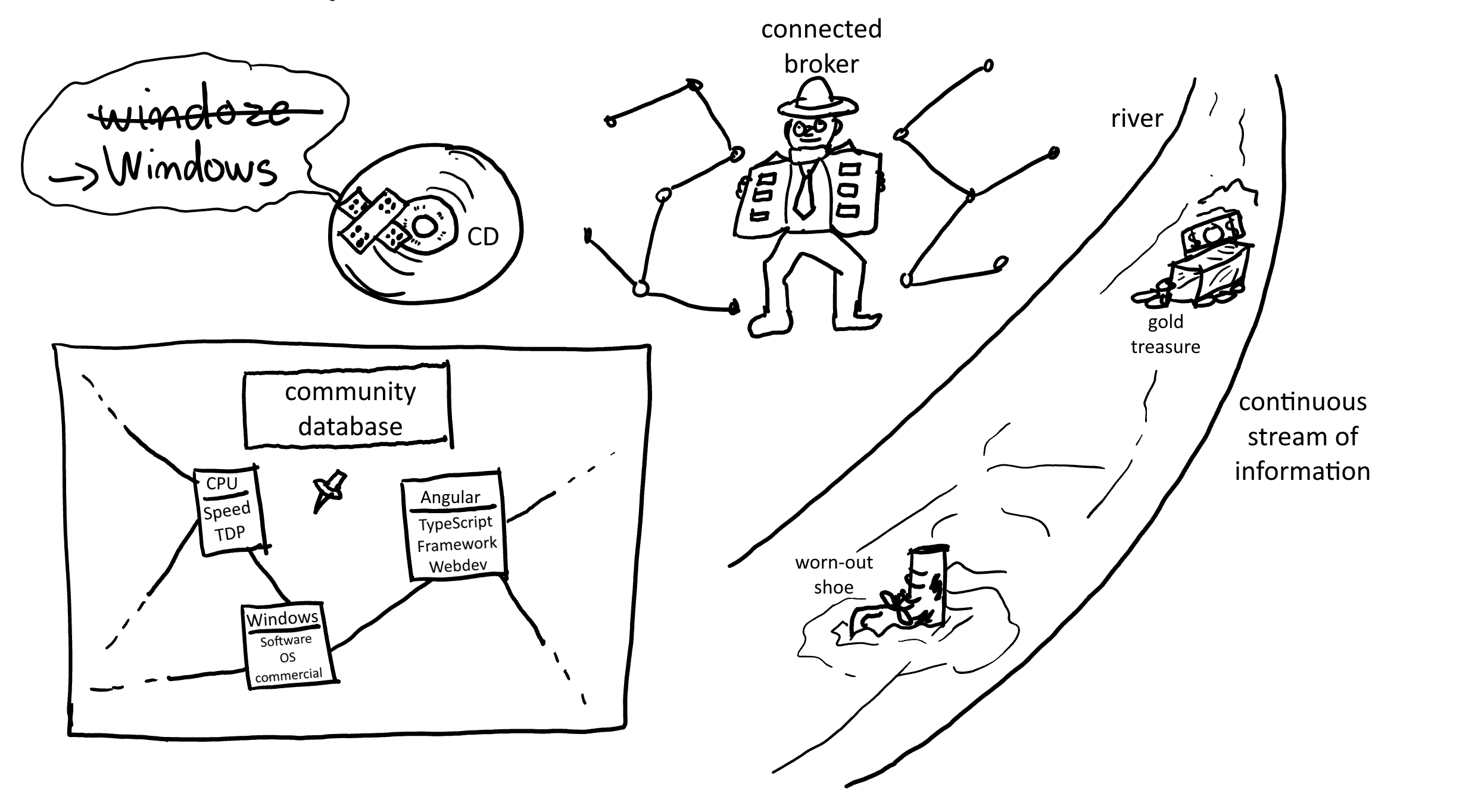The following chapters will teach you the essentials of data source management. Data sources are integrations of external data and information intelligence providers, empowering the core platform in its operations. It is not to be confused with the IT resource registries/databases of your IT landscape, which are categorized as inventory instead.
You can choose from various supported integrations. In this product version, the Technology Catalog is the only one. Get started with it to relate the data found in your resources to a vast, rich and intelligent information cloud, combining expert review, estimation by artificial intelligence and trusted partners. It provides technology for the normalization and enrichment of data-sets.
Additionally related information impacts the quality of several platform functions (+/-).
•recognition, conviction and relationship of statistics and data presentation,
•success-rate of platform information queries (list view searches, REST API),
•de-duplication of IT landscape resources,
•inventory collection, and
•reporting (in connection with the Data Hub product).
Requirements for integration-use are simple. You need to license the integration and the platform server depends on a solid infrastructure connection to the internet.
What is a data source?
Data sources provide up-to-date information based on queries. Their service quality is maintained by reputable specialists. Newest technological developments drive their future design, sustaining the integrated-into product's quality. Queries improve the data source by relationship and weight scoring, even automatically. Maintainers depend on feedback to improve and include relevant content.

Illustration of various possible data source interpretations. In some situations, data sources act like band-aid or medicine. They fix corrupted data so that logic depending on the exact and correct data-form continues to work. Data sources are connected brokers who deal with many interested parties. Just like the human counterparts, they estimate informational quality based on their knowledge and interactions. Data sources can be seen as community databases shared between interested parties to put information like on a bulletin board. In other terms, they form a continuous steam of information of differing informational value. Coming out of both checked and un-checked sources, information is scored compared to being gold treasure or a worn-out shoe thrown (away) into the river.